In pictures: Ulrich Schnauss' London studio
Inside the ambient master's synth-packed studio

Ulrich Schnauss' London studio
Knocking on the front door of Ulrich Schnauss’s unassuming London terraced-house hardly prepares you for the veritable Aladdin’s cave of desirable vintage synthesizer delights contained within.
A long-time exponent and ambassador for ambient electronic music, Schnauss’s new album, Tomorrow is Another Day, fashioned along with Mark Peters, guitarist of Engineers, is a beautiful, mesmeric sonic-trip and the many warm tones within it highlight Schnauss’s eclectic palette of synthesizers and sound design tools, both analogue and, refreshingly, digital.
Walking into Ulrich Schnauss’s nerve-centre is a little overwhelming given that most of the vintage synthesizers and sought-after outboard you’ve ever dreamed about owning are to be found strewn around the studio.
As trite as it is to admit, the phrase ‘Carlsberg don’t do electronic studio set-ups...’ is on heavy internal rotation as FM giddily flit from one incredible synth to another.
Schnauss is much more than a random collector, though. Every piece of equipment, be it keyboard or 19-inch rack-unit, has been bought and deployed for specific reasons and his passion for electronic instruments is matched by his intimate knowledge of what each synth is capable of bringing to the feast. Whether it’s the legendary Elka Synthex that first greets you as you enter the studio, the Oberheim OB-8, Rhodes Chroma or even the Waldorf Wave that sits on the back wall, FM get the distinct impression that Schnauss has explored and charted everything they have to offer during countless late-night dream weaving sessions.
Read on to take a guided tour of Schnauss’ synth-stuffed studio, and pick up the latest issue of Future Music (FM276) to read a full interview with the man himself.
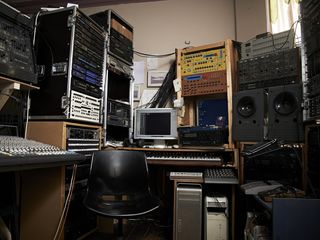
The studio
“I think the idea behind having so much stuff was basically to have the widest range of sonic colours as possible. It’s still the same if I buy something new these days in that I’m just trying to add something interesting to the existing palette.
“Obviously you could argue whether you need this many synthesizers... [laughs] you don’t! You can make great music with a much smaller set-up but I really enjoy synthesizers – they’re one of my great passions so, if you can do something then why not? I’m really into polyphonic synths and there’s a lot of interesting digital stuff that’s overlooked.”

Korg Triton Rack
“Everyone will complain: ‘I thought he was using analogue!’ This is great. I love this instrument.”

Allen & Heath GL4000
“I’ve been mixing stuff in the box for the last eight or nine years but this summer I was working at a studio where I used a desk again and noticed that the summing is better in a desk. I like the EQ on this - the most important part of the desk - but that’s a personal preference.”
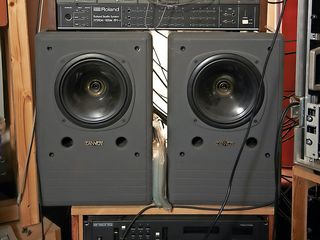
Tannoy monitors
“I always liked these very much because they’re very honest. They’re quite brutal, not like hi-fi speakers. But that’s great because when something sounds spacious and wide on these it’s going to sound good on any system.”
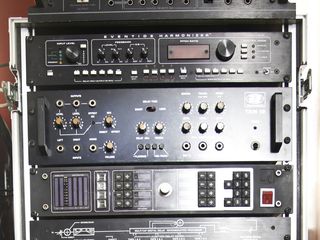
Eventide H949 and Dynacord TAM-19
“The Eventide is a classic. I have an H3000 too, but especially for chorusing I prefer this one. It’s one of the nicest choruses I know.
“I suppose you could say [the TAM-19] is a flanger mostly, but at the end of the day it’s just a brutal modulation effect.”
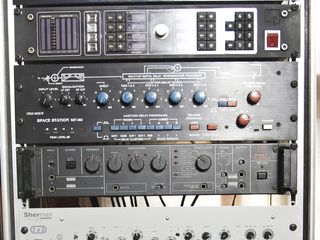
Ursa Major Space Station SST-282 and Quantec QRS Raumsimulator
“With effects, it’s similar to synths. Over the years I’ve bought things with a unique character that add an element to the overall sound. And the Ursa Major is a very odd sounding unit.
“[The QRS] is the opposite of the Ursa Major. While that is very low-fi and gritty, the QRS is one of the most high-end, most expensive sounding reverbs I’ve heard. I think it’s superior to the Lexicon stuff.”

Sherman Filterbank
“I just got this recently as I got interested in tempo-based modulations and while you can’t sync the LFOs to MIDI, you can trigger the filter envelope with MIDI signals and it works very nicely with any rhythmical, sequency stuff. It’s very characterful and powerful.”
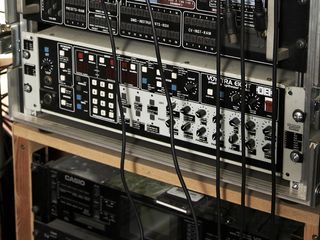
Voyetra Eight
“It’s not usually perfectly in tune. Especially when it’s not warmed up. They’ve really gone up. I got this one for $1,500, but now I see them for four or five thousand.”

Publison DHM 89 B2
“This is my favourite effects unit which is why I’ve got two of them. It’s from 1978 but it’s entirely digital. It’s a pitch shifter, delay and looper.
"I feed the signal of the first unit into the second one and use different pitch settings and you get something that sounds very much like granular synthesis. It’s really good for creating ambient background drones.”
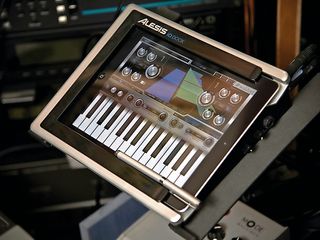
Apple iPad
One of Ulrich’s new additions. Used mainly for the Waldorf Nave app.
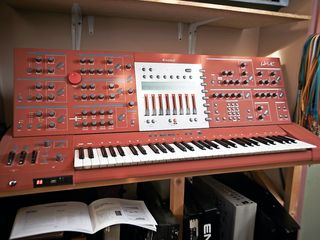
Waldorf Wave
The intimidating and rare Waldorf Wave requires careful coaxing into making great sounds.

Future Music is the number one magazine for today's producers. Packed with technique and technology we'll help you make great new music. All-access artist interviews, in-depth gear reviews, essential production tutorials and much more. Every marvellous monthly edition features reliable reviews of the latest and greatest hardware and software technology and techniques, unparalleled advice, in-depth interviews, sensational free samples and so much more to improve the experience and outcome of your music-making.


Most Popular







